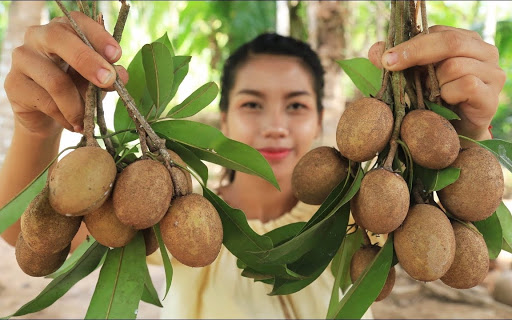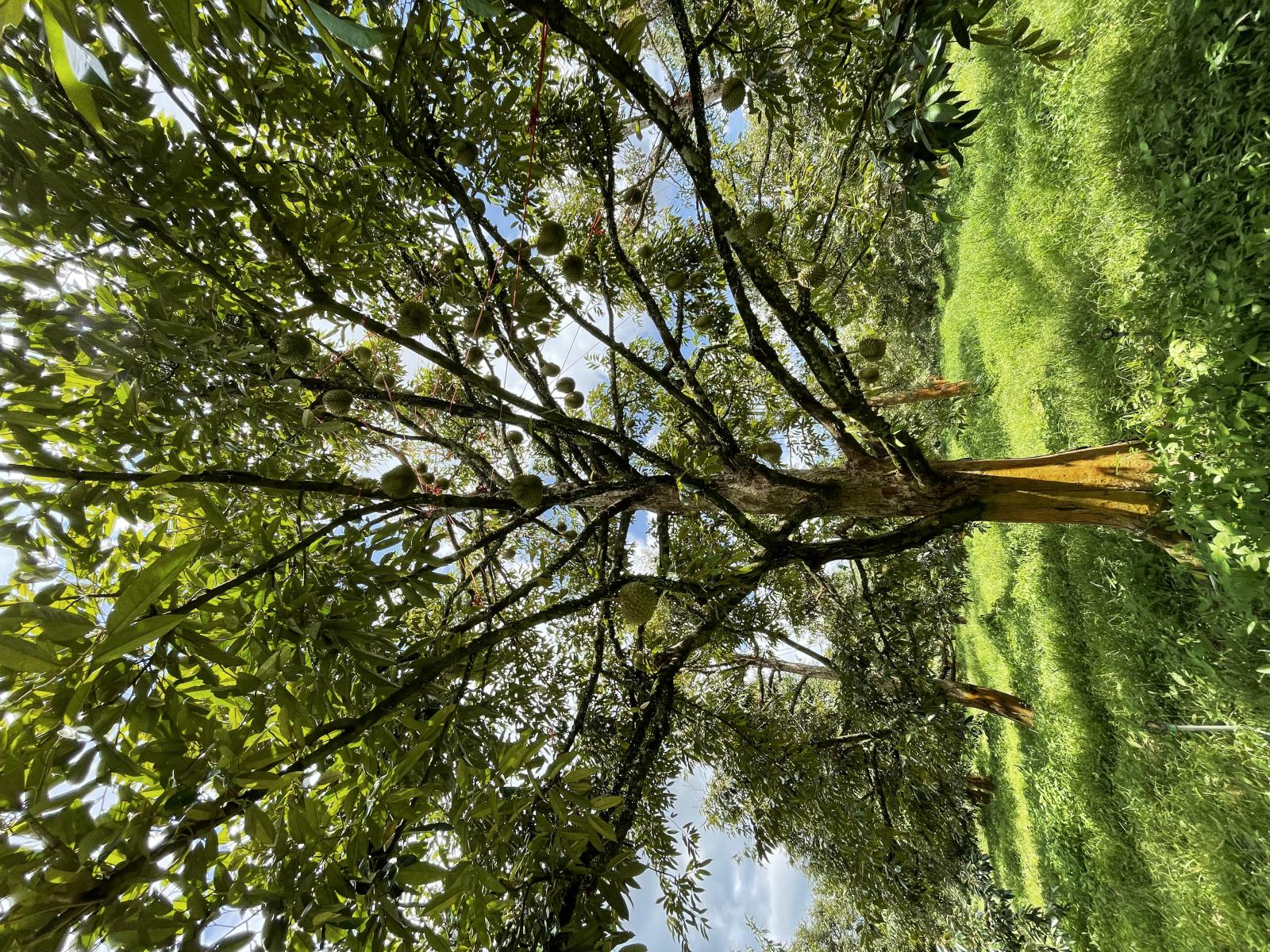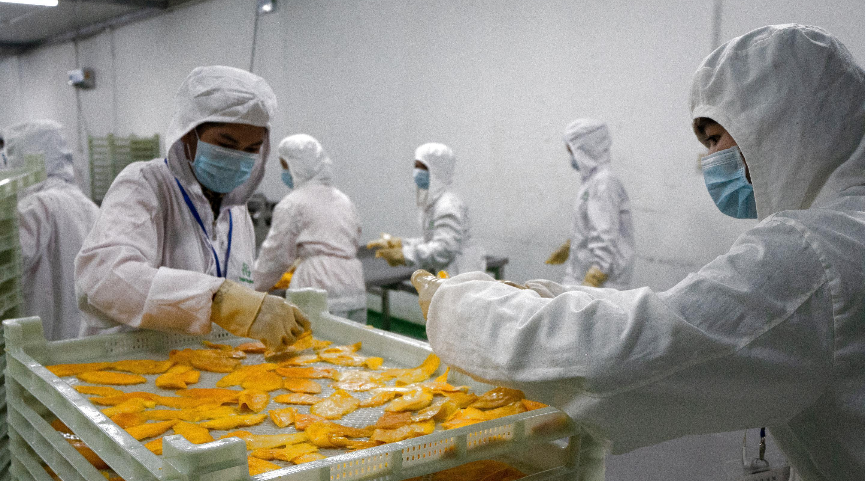

(Written by Li Min / Translated by Zhang Xiaoyan)
"When I ate pitaya for the first time more than ten years ago, I only felt that the skin of pitaya was red and beautiful, but I didn't know how thick the skin should be cut off at that time, so I first removed a thin layer of the skin and had a taste. I didn't feel right until I realized that just eating the white pulp inside would do," said Ms. Zhang, a citizen from Guilin, Guangxi of China, with a smile, when asked about her first experience of contacting tropical fruits in Southeast Asia. She is a "fruit lover", who often buys all kinds of fruits, including imported fruits from Southeast Asia. So far, , she is not surprised any more to see other special Southeast Asian fruits than pitaya, such as Duku-Langsat, heart-shaped fruit(manilkara zapoto), snake fruit (salak), etc, and she is quite an expert in a variety of eating patterns, like slicing, scooping and so on.
The fruit imported from Southeast Asia has been changed from "fruit for tasting only" to one that is consumed in daily life, becoming available and affordable to more and more Chinese consumers. Behind this is the continuous upgrading of China's consumer market and the prosperity and development of the China-ASEAN fruit trade. However, the booming fruit trade between the two sides can bring far more changes than that.

Bigger "fruit baskets" swell moneybags
A 4-hour drive southeastward from Bangkok, Thailand's capital, will reach Chanthaburi Province, which is known as Thailand's "home to fruits", where orchards of durian and mangosteen are widespread, many high-end cars travel along the way, and some local people even have private swimming pools of clear water in their courtyards. Thailand is one of the few producing areas of high-quality durians in the world. In recent years, through e-commerce and other channels, durians of Thailand have opened up a huge market in China, with price keeping on the rise of this fruit in short supply. As a result, many Thai durian traders who have found a good market before the outbreak of the COVID-19 pandemic have made huge profits and led a well-off life.
In addition to Thailand, Malaysia is another producing area of high-quality durians with China as its top export market. Durian orchards in the country have become a hot spot in the eyes of investors. Even real estate tycoons, palm oil manufacturers and the largest agricultural products exporter in Malaysia have set foot in durian cultivation in order to make huge profits. According to the head of Malaysia's Ministry of Agriculture, growing durian is not just a hobby today, because durian is regarded as the "gold" of the agriculture in the country.
In Laos, the investment of Chinese enterprises in crop cultivation is also changing the level of local agricultural modernization and the life of fruit farmers.“In 2014, we invested in the establishment of Laos Jinsui Agriculture Co., Ltd. in Oudomxay Province, Laos, mainly to carry out the cultivation of fruits, melons and other crops in Laos. So far, the company has made a total investment of 136 million yuan and grown 30,000 mu (2,000 hectares) of bananas, " said Xie Xiaoxia, assistant to the general manager of China’s Guangxi Jinsui Agricultural Group Co., Ltd., and she also said that the company in Laos has copied the production management mode and concept of Guangxi Jinsui Group in China, which, through land transfer lease and household-based subcontracting, enables the local farmers to participate as contractors in the daily management of banana growing in the banana base, providing 2,100 long-term and stable employment posts for contractors every year.
According to Xie Xiaoxia, these contractors can not only enjoy independent standard housing of 15-18 square meters, but also get living expenses of 1.4 million kip (about 150 US dollars) per month and contract compensation after harvest. The annual income of each contractor is 50-60 million kip.“Over the past six years, in total the company has not only paid 150 billion kip to the contractor as compensation, but also 93.4 billion kip to owners as rent for land use, benefiting 1,300 local households; it has also paid 11.5 billion kip in land lease tax, banana export tax and other taxes, becoming a major taxpayer in Oudomxay Province," said Xie Xiaoxia.
In the photos presented by Xie Xiaoxia that illustrate the team building activities, the Laotian employees dressed in uniform happily are playing table tennis. What changes have the hot China-ASEAN fruit trade brought to ASEAN countries and local people? Maybe these smiles are the best answer.
Make high-quality Southeast Asian fruits available to more Chinese customers
It is the season for durians to go on the market in Thailand again. Song Fu, a Chinese businessman doing durian trade in Thailand, personally drove to the cooperative durian orchard to check the picking of the fruits on site. With producing resources in Thailand and e-commerce and other sales channels in China, Song Fu said that despite the impact of the COVID-19 pandemic, his durian business is still in normal operation.“Durians can be transported by air directly from Bangkok to Shenzhen (in south China’s Guangdong Province) on July 20, where on July 21 they will be handed over to SF-Express (China’s top express delivery service provider) and be purchasable online by scanning the QR code," said he, who is now busy with the promotion and sales of a new batch of imported durian from Thailand.
 |
In China, Song Fu is not the only one that seizes the opportunity of importing fruits from Southeast Asia.
A young man born in 1990s,Cao Zhongyong who majored in Thai language at university now becomes an expert in purchasing durian in Thailand at a young age due to his close ties with that fruit in Thailand. At present, he is a core member of the Southeast Asia purchasing team and the Joyvio durian team for high-end durian brand under Joy Wing Mau Group (a top fruit trader in China). Together with his partners, he is working hard in China's fruit sales market for "durian business".
In his job career spanning over 5 years, Cao Zhongyong has spent 80% of his time dealing with durians every year, in which he has tasted more than 40 varieties of durians. Now he is able to tell the maturity of durians by his naked eyes only. Such a senior fruit appraiser plays an important role in the control of durian import quality.
In recent years, thanks to the huge demand for imported fruits in the Chinese market, Joy Wing Mau Group where Cao Zhongyong is employed has developed rapidly, growing from all-channel fruit distribution network and bulk fruit supply, with more than 5,000 supermarket stores and more than 20,000 fruit stores covered by its service, distributing nearly 1,200 tons of high-quality fruit every day. In 2020, the group opened the Joyvio durian flagship store at Tmall, China’s top e-commerce platform, which has not only launched its e-commerce process, but also opened the way for Thailand durians to reach consumers directly from the country of origin.
With the improvement of the overall consumption power of Chinese consumers and the further development of the sinking market, the hot sale of imported fruits from Southeast Asia in the Chinese market has naturally attracted the attention of many businessmen and investors. Whether they are "Song Fu" or "Joy Wing Mau Group", they are not only the boosters to push the high-quality fruits from Southeast Asia into the Chinese market, but also the beneficiaries of the vigorous development of the China-ASEAN fruit trade. Starting from the consumer side, their continuous innovation in quality control and sales channels will also bring more positive changes to China's fruit consumption market.
Tap value of fruits and change urban industrial pattern
Some of the fruits exported to China from Southeast Asia are sold to China's domestic market through various sales channels, while others are "landed" in Pingxiang, the largest land port for ASEAN fruits to enter China. Benefiting from the development of China-ASEAN fruit trade, Pingxiang city has not only kept upgrading the port infrastructure construction, seen the number of relevant employees increase and the development of e-commerce becoming more and more mature, but also released its vitality to the full. However, the key to Pingxiang's transformation and upgrading from "channel trade" to "port processing" is to retain part of the passing resources and dig deep into the industrial value.

Xiashi Town of Pingxiang, where "one town connects three cities", has the nearest and farthest points at 15 kilometers and 23 kilometers respectively away from the border trade points of each port, along with abundant tourism resources around. The whole town is fully covered by Pingxiang Border Economic Cooperation Zone, a national industrial park, which has become a breakthrough in Pingxiang's industrial development, a new economic growth point and an important platform for building China (Pingxiang) ASEAN fruit town.
Taking its own advantages, Pingxiang has carried out processing of the rich ASEAN commodities imported from mutual trade, and focusing on the strategy of industry-city integration, with ASEAN culture as the feature, leisure food and agricultural products processing industry as the core, the city will make every effort to build Xiashi Industrial Park into China (Pingxiang) ASEAN fruit town.
Before the outbreak of COVID-19 pandemic, many border trade processing enterprises such as Yanjin Shop Food, Shandong Shatu Food, Guangxi Viet Huong Vien Dairy, Baixiunong Agricultural and Sideline Products, Hengbiao Grain and Oil had entered the town and put into operation there, and Fujian Qinghong, Jialiang Dried Fruit and other projects signed contracts for settlement. In addition to the processing industry, a new tourism route of buying and tasting fruits is becoming clearer, which is expected to inject new vitality into the development of Pingxiang City.
No matter it is a city, a business or a person, the prosperity of China-ASEAN fruit trade has brought positive changes of varying degrees to the places of origin, ports, brand businesses and consumers. With the upgrading of China-ASEAN economic and trade cooperation, we believe that such positive changes will go on.
桂ICP备14000177号 Copyright@2006-2013 Guangxi China-ASEAN Panorama Magazine Agency Co., Ltd. All Rights Reserved